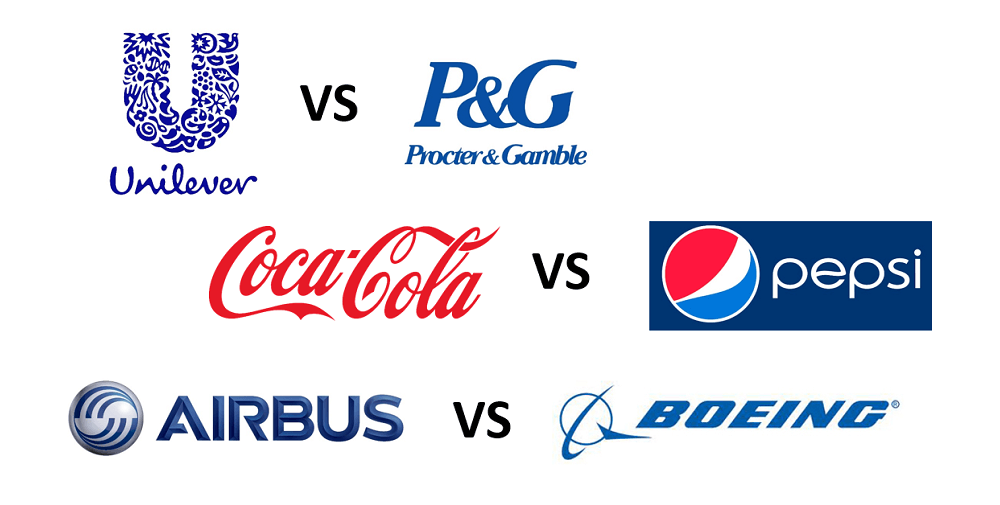Understand the structure of Global Competition and resulting strategic options.
The Globalization of Competition
An inevitable consequence of globalization of markets is the growth of intense competition on a global scale.
Liberalization, deregulation and privatization are the three forces that are transforming the global business environment and lead to a greater number of competitors and more intensive competition.
If, when expanding abroad, a company encounters the same rival in market after market, then it engages in truly global competition.
Lets take a look at the Structure of Competition and Resulting Strategic Options.
Global Firm versus Global Firm
Some industries are becoming increasingly global. In these industries, the same global competitors hold significant global market shares and face each other in virtually every key market.
This can develop to an extent that the global companies have excluded all other companies from their markets.
Major global competitors watch each other’s moves in various markets around the world in order to respond to any action that will give the competitor a market advantage.
Key battleground markets are the emerging markets of Russia, China and India.
Examples: Airbus vs Boeing, Unilever vs Procter & Gamble, Cocal Cola vs Pepsi, Nike vs Reebok
Strategic Moves in ‘Truly’ Global Competition
Cross-Country Subsidization
Using profits from one country in which a business operates to subsidize competitive actions in another country (e.g. Bic and Scripto).
Counterparry
Defending against a competitive attack in one country by counteracting in another country (Fuji and Kodak).
Globally Coordinated Moves
Coordinating an attack in which competitive moves are made in different countries (e.g. global roll-outs).
Targeting of Global Competitors
Identifying actual and potential global competitors and selecting an overall posture: attack, avoidance or acquisition.
Global Firm versus Local Firm
Global companies can also have local competitors.
Examples: Mac Donalds vs Ristorante Italiano, Louis Vuitton vs Guido Maria Kretschmer
Strengths of Global Firms (MNCs)
- Larger
- Better access to resources
- More experience worldwide in product development and marketing
Strenghts of Local Firms
- Better understand the local culture
- Operate more effectively in addressing consumer needs
- Dealing effectively with local distributors and governments
- More flexible (no standard approaches)
Strategic Moves for Local Companies
Defender Strategy
Focuses on leveraging local assets in market segments where MNC’s may have weaknesses.
Local assets often include knowledge of local tastes and customs and good relationships with local distributors and suppliers. (e.g. Tatlises’ fast food in Turkey).
Extender Strategy
Focusing on expanding into foreign markets similar to their own using successful practices that they have already developed in their own market (e.g. SABs in Eastern Europe)
BATheories.com is managed by a group of educators from Mumbai. We also manage the website AcademicsHQ.com. Our panel includes experienced professionals and lecturers with a background in management. BATheories is where we talk about the various business theories and models for BA (Business Administration) students.
